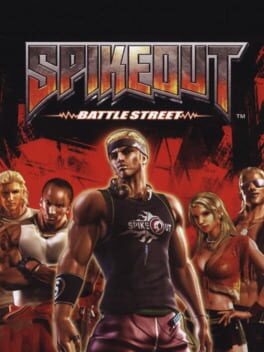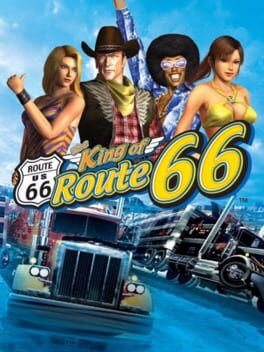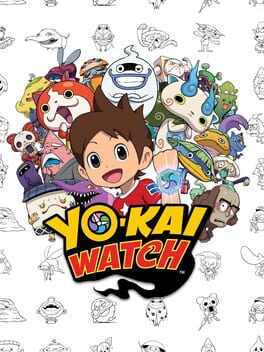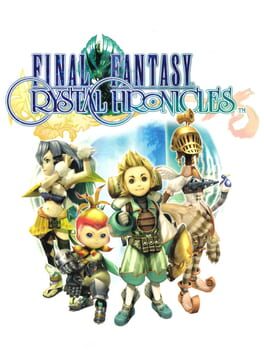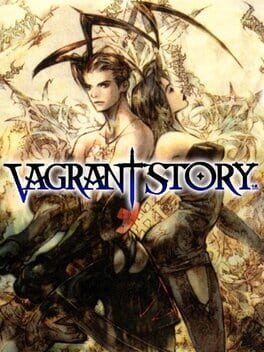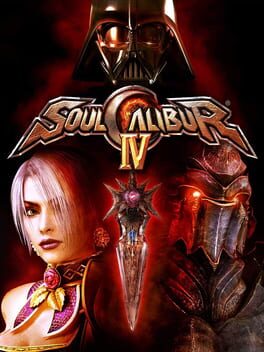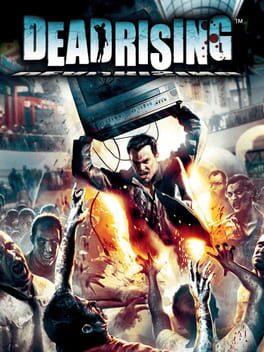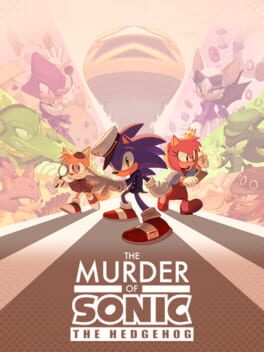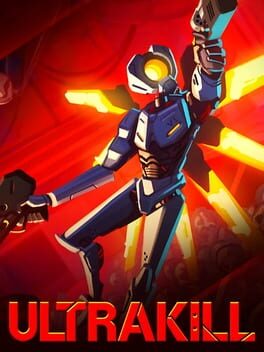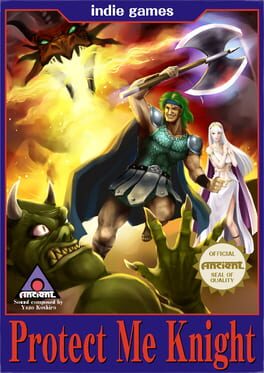hazys
597 Reviews liked by hazys
EO's style finally matured with Etrian Odyssey III: The Drowned City, the peak of their art. With this entry, Atlus improved on all fronts (artistically, systems mechanics, gameplay, level variety, map design, etc.) expanding on the intuitions learned from the previous 2 games. Wider build variety (thanks to the addition of subclasses and an almost complete class overhaul) is complemented by an even stronger emphasis on tense, but not terribly frustrating (as in the second game) or tedious (as in the first), but still very challenging dungeon crawling. With this release, Etrian Odyssey can claim to be a worthy successor to dungeon crawlers for the modern age.
After liking the first game a lot and enjoying the sequels, I don't know what to expect aside from 4 fresh, new and younger faces and a story trying to build what little to no plot the arcade game had.
But as soon as I got through half of the first level and the second story segment, I made a realization: This is basically a port aside from the graphics and redesigns. A remake disguised as a new sequel. I knew animations were the same but I honestly didn't think entire levels would be as well.
I wanna say I was disappointed but given how rare the series is as a whole (from what I imagine overseas) makes me think of a couple of reasons why that is:
1. Someone wanted to port the game to make up for the canceled dreamcast port of the original game now that they have a more powerful console in their hands.
And 2. Take advantage of online. In the Xbox's case you don't need an additional network adapter like the PS2 Phat model since the game is by enlarge, a multiplayer game.
As for the game itself, it's Spikeout but with that classic mid 2000s beat em up aesthetic (which somehow makes the game uglier than its arcade counterpart.) I joke but at the very least, some locales didn't transition too terribly. I do admire they went through the effort to redesign every playable character and bosses, even bosses that are clones/recolors.
I like the new playable characters, erm... gameplay wise.
Spike Jr. is.... well... Spike Jr. with a couple of small differences.
Jackal is by far the worst one. Some slow moves, really bad throws. He's sort of a combination of Jr. and Tenshin but worse.
Min Hua is pretty much Akira from Virtua Fighter. Same animations and all. She's probably the most combo friendly character to play as making her my favorite. Because she's so short, some high attacks will barely graze her. Unintentional, maybe, but I'll take it.
Fiona is a special case because her moveset was lifted from Alberto, a character from Spiker's Battle. Same with Void (a story unlockable) whose moveset was taken from Gorn from Spiker's.
You can unlock pretty much every boss and miniboss in the game which is stuff I always like. Special requirement is to be on normal/hard mode, do a 4 hit combo on the boss before death all without getting hit (but you can get hit by their mooks though. And trust me, the 4 hit combo thing is more generous than it might seem if you're good at grab attacks.
Just like the original game, it's hard. But fun. You can map all sorts of inputs which makes performing some of these moves more comfortable to pull off on a controller. And it's probably me, I think hits have more of an impact than the arcade game.
Battle Street mode is pretty much the arcade mode. You can turn on the oh-so unforgiving timer, continues and even friendly fire if you want and transitions to online play. You can even switch difficulties. Stages also unlock after doing the story mode so you can replay the entirety of one stage. So this is a nice way to experience the original game in this new coat of paint.
Now for the big cons...
The way story mode was handled is kind of horrendous lol
Thing is, there are no continues or checkpoints to be seen anywhere. You can switch on easy mode... but only if you die twice and you can't switch Story mode difficulty willingly. It's not so bad in a few story segments if you're decent at the game. Its those couple of two or three that sour the whole decision to not have continues. Story segment 3, and especially 7 suck major balls cuz they're one of the longer stages which makes dying really tiresome.
Health kits restore very little health as you'd expect unless you're playing easy mode. By the way, enemy AI is pretty much the same, even damage. Only difference is that health items restore more health and bosses don't have invincibility frames after getting knocked down.
You know you're unforgiving when even God Hand has more generous checkpoints. But at least there's no timer by default.
The story just.... exists... but it is pretty funny though. The story starts with Spike missing... nothing much happens.... then at the beginning of the final level, Spike comes out of nowhere. Spike Jr. is pretty much an asshole to everyone, especially the female characters. Lots of raised questions dropped. Game acts like its wrapped everything up. It's the high cheese levels only to come out of this era of games.
Can I just say that the game doesn't teach you how to actually play the game unlike the arcade demos. No even a character movelist. I would know given my experience with the series.
I imagine that's why this game got review bombed in the first place. Reviewing an entry to a relatively unknown series whilst going in not knowing how the game even works PLUS whatever I said during my story mode rambling.
I still enjoyed my time with it. If you want Spikeout with more characters, online co-op (if you can get it to work) then you might get a kick out of it. For newcomers, I'd just look up how to play on the web (Gamefaqs or the jp wiki) and play the story on easy mode. That's all I can say if you want the best experience possible.
But as soon as I got through half of the first level and the second story segment, I made a realization: This is basically a port aside from the graphics and redesigns. A remake disguised as a new sequel. I knew animations were the same but I honestly didn't think entire levels would be as well.
I wanna say I was disappointed but given how rare the series is as a whole (from what I imagine overseas) makes me think of a couple of reasons why that is:
1. Someone wanted to port the game to make up for the canceled dreamcast port of the original game now that they have a more powerful console in their hands.
And 2. Take advantage of online. In the Xbox's case you don't need an additional network adapter like the PS2 Phat model since the game is by enlarge, a multiplayer game.
As for the game itself, it's Spikeout but with that classic mid 2000s beat em up aesthetic (which somehow makes the game uglier than its arcade counterpart.) I joke but at the very least, some locales didn't transition too terribly. I do admire they went through the effort to redesign every playable character and bosses, even bosses that are clones/recolors.
I like the new playable characters, erm... gameplay wise.
Spike Jr. is.... well... Spike Jr. with a couple of small differences.
Jackal is by far the worst one. Some slow moves, really bad throws. He's sort of a combination of Jr. and Tenshin but worse.
Min Hua is pretty much Akira from Virtua Fighter. Same animations and all. She's probably the most combo friendly character to play as making her my favorite. Because she's so short, some high attacks will barely graze her. Unintentional, maybe, but I'll take it.
Fiona is a special case because her moveset was lifted from Alberto, a character from Spiker's Battle. Same with Void (a story unlockable) whose moveset was taken from Gorn from Spiker's.
You can unlock pretty much every boss and miniboss in the game which is stuff I always like. Special requirement is to be on normal/hard mode, do a 4 hit combo on the boss before death all without getting hit (but you can get hit by their mooks though. And trust me, the 4 hit combo thing is more generous than it might seem if you're good at grab attacks.
Just like the original game, it's hard. But fun. You can map all sorts of inputs which makes performing some of these moves more comfortable to pull off on a controller. And it's probably me, I think hits have more of an impact than the arcade game.
Battle Street mode is pretty much the arcade mode. You can turn on the oh-so unforgiving timer, continues and even friendly fire if you want and transitions to online play. You can even switch difficulties. Stages also unlock after doing the story mode so you can replay the entirety of one stage. So this is a nice way to experience the original game in this new coat of paint.
Now for the big cons...
The way story mode was handled is kind of horrendous lol
Thing is, there are no continues or checkpoints to be seen anywhere. You can switch on easy mode... but only if you die twice and you can't switch Story mode difficulty willingly. It's not so bad in a few story segments if you're decent at the game. Its those couple of two or three that sour the whole decision to not have continues. Story segment 3, and especially 7 suck major balls cuz they're one of the longer stages which makes dying really tiresome.
Health kits restore very little health as you'd expect unless you're playing easy mode. By the way, enemy AI is pretty much the same, even damage. Only difference is that health items restore more health and bosses don't have invincibility frames after getting knocked down.
You know you're unforgiving when even God Hand has more generous checkpoints. But at least there's no timer by default.
The story just.... exists... but it is pretty funny though. The story starts with Spike missing... nothing much happens.... then at the beginning of the final level, Spike comes out of nowhere. Spike Jr. is pretty much an asshole to everyone, especially the female characters. Lots of raised questions dropped. Game acts like its wrapped everything up. It's the high cheese levels only to come out of this era of games.
Can I just say that the game doesn't teach you how to actually play the game unlike the arcade demos. No even a character movelist. I would know given my experience with the series.
I imagine that's why this game got review bombed in the first place. Reviewing an entry to a relatively unknown series whilst going in not knowing how the game even works PLUS whatever I said during my story mode rambling.
I still enjoyed my time with it. If you want Spikeout with more characters, online co-op (if you can get it to work) then you might get a kick out of it. For newcomers, I'd just look up how to play on the web (Gamefaqs or the jp wiki) and play the story on easy mode. That's all I can say if you want the best experience possible.
Tetris
1992
This game was the real reason why I bought a CD-i. The most beautiful photorealistic animated backgrounds of nature adorn the edges of your tetris playfield monolith, while the smoothest, most weather-channel-core kind-of-vaporwave-but-not-really music plays. While the purpose of it was likely to showcase how CD media can be used to make a more "real" game compared to other variations of tetris up to this point, it also turned this game into an incredible aesthetic piece/time capsule.
As an actual tetris game, it's kinda mid at best. Only one direction to rotate the pieces, true random piece selection, no soft dropping, hard dropping relegated to a button press instead of the more logical up/down input, and no lock delay making having a low pile integral to survival. Despite all those problems, it's still Tetris. And I like Tetris. The game has a bespoke scenic background and song for each speed level, which does mean every 10 or so lines the game has to stop and load in the next level which can break the pace a bit. For once, I wish I wasn't so decent at Tetris so that I could spend more time in each level to really soak in the atmosphere.
I've heard this game be described as a proto-Tetris Effect due to its heavy aesthetic emphasis and I definitely see the similarities. Even when I made a mistake due to the myriad of minor gameplay gripes, I was never frustrated. If anything, starting over was exciting because I could vibe through the game from the beginning all over again. This game is basically the killer app of the system for me. It's a bit obscure, it's got that optimistic 90's CD-ROM energy, it's got an extremely strong aesthetic, and it's not the best in the gameplay department. Can you get any more CD-i than that?
As an actual tetris game, it's kinda mid at best. Only one direction to rotate the pieces, true random piece selection, no soft dropping, hard dropping relegated to a button press instead of the more logical up/down input, and no lock delay making having a low pile integral to survival. Despite all those problems, it's still Tetris. And I like Tetris. The game has a bespoke scenic background and song for each speed level, which does mean every 10 or so lines the game has to stop and load in the next level which can break the pace a bit. For once, I wish I wasn't so decent at Tetris so that I could spend more time in each level to really soak in the atmosphere.
I've heard this game be described as a proto-Tetris Effect due to its heavy aesthetic emphasis and I definitely see the similarities. Even when I made a mistake due to the myriad of minor gameplay gripes, I was never frustrated. If anything, starting over was exciting because I could vibe through the game from the beginning all over again. This game is basically the killer app of the system for me. It's a bit obscure, it's got that optimistic 90's CD-ROM energy, it's got an extremely strong aesthetic, and it's not the best in the gameplay department. Can you get any more CD-i than that?
The King of Route 66
2002
Metamorphic Force
1993
Yo-kai Watch
2013
Vagrant Story
2000
Squaresoft and Yasumi Matsuno's second collaboration spawned the painstakingly crafted Vagrant Story, a hyper-intricate and hyper-mystifying gem, perhaps the culmination of the former's acrobatic presentation and the latter's disquieting writing. Alongside the visuals, what immediately stands out are the main cutscenes: A minimal and reckless form of storytelling, packed with refined - almost cryptic language and portrait-worthy shots in which characters enter, ponder and exit with (seemingly) little to no regard for identity nor coherence, only to slowly decode a tragic plot and cast as it proceeds. The best moments - in particular, emit an immersive yet disorienting atmosphere that reminds one of the more abstract, ghostly experiences of Xenogears' second disc, while others are boss fight intros rendered in creative and dramatic ways. Its structure, both narratively and functionally, had little in common with JRPGs; largely indifferent to the hero's journey and to the village-to-dungeon format (basically a gradually-unraveling dungeon-crawler that disposed of the hub, shops, friendly NPCs, currency, etc.), which becomes an attraction in itself.
Equally original is the gameplay, ostensibly a mix of action-adventure, platforming and ARPG whose combat combines free movement with menu-selection pauses (reminiscent of Parasite Eve minus the ATB gauge) and damage-able limbs a la Front Mission. But in reality, it's the systems that tower over the rest; dense and overwhelming in a vein similar to Ogre Battle (another Matsuno-led project). The most striking aspect is probably how one's equipment factors into hit/damage calculations, utilizing not one but three sets of resistances + weaknesses (affinity, class and type, i.e. elements, species and weapon blades, respectively), and partly governed by mutating stat levels (e.g. Fire, Undead, Piercing) tied to both gear and enemies. At the same time, mechanics such as Break Arts (weapon-exclusive supers unlocked via use-based mastery), Chain Abilities (that evolves SMRPG via quasi-unlimited, unlockable offensive/defensive follow-ups), and especially the aptly-named RISK (a secondary meter that trades accuracy and defense for crit-rate and healing power as chains accumulate) add even more rules and layers to this peculiar brand of strategic-action. This game's most trivial system would be a main feature on other RPGs.
Other - but no less vital mechanics complement the more distinguished ones, ranging from crafting, weapon mods, equipment tiers, durability, proficiency, etc. Altogether, these ideas form a convoluted web of interactions that turns each encounter into a flexible customization challenge, where bosses can either last for 20 minutes or fall to a single chain combo. Not even its many drawbacks (the overdemanding and sometimes hopeless early-game situations, the constant menu setup and the input-bloat) could spoil this multifaceted type-matching approach. By the end, the player has gathered and honed a virtual toolbox of equipment, magic and augments to construct specialized builds for any battle scenario.
A veritable alien JRPG encyclopedia, elegant and puzzling, theatrical but never awkward nor melodramatic, complicated yet intriguing, Vagrant Story absorbs and weaves together concepts from all sorts of past games without belonging to any of them.
Equally original is the gameplay, ostensibly a mix of action-adventure, platforming and ARPG whose combat combines free movement with menu-selection pauses (reminiscent of Parasite Eve minus the ATB gauge) and damage-able limbs a la Front Mission. But in reality, it's the systems that tower over the rest; dense and overwhelming in a vein similar to Ogre Battle (another Matsuno-led project). The most striking aspect is probably how one's equipment factors into hit/damage calculations, utilizing not one but three sets of resistances + weaknesses (affinity, class and type, i.e. elements, species and weapon blades, respectively), and partly governed by mutating stat levels (e.g. Fire, Undead, Piercing) tied to both gear and enemies. At the same time, mechanics such as Break Arts (weapon-exclusive supers unlocked via use-based mastery), Chain Abilities (that evolves SMRPG via quasi-unlimited, unlockable offensive/defensive follow-ups), and especially the aptly-named RISK (a secondary meter that trades accuracy and defense for crit-rate and healing power as chains accumulate) add even more rules and layers to this peculiar brand of strategic-action. This game's most trivial system would be a main feature on other RPGs.
Other - but no less vital mechanics complement the more distinguished ones, ranging from crafting, weapon mods, equipment tiers, durability, proficiency, etc. Altogether, these ideas form a convoluted web of interactions that turns each encounter into a flexible customization challenge, where bosses can either last for 20 minutes or fall to a single chain combo. Not even its many drawbacks (the overdemanding and sometimes hopeless early-game situations, the constant menu setup and the input-bloat) could spoil this multifaceted type-matching approach. By the end, the player has gathered and honed a virtual toolbox of equipment, magic and augments to construct specialized builds for any battle scenario.
A veritable alien JRPG encyclopedia, elegant and puzzling, theatrical but never awkward nor melodramatic, complicated yet intriguing, Vagrant Story absorbs and weaves together concepts from all sorts of past games without belonging to any of them.
SoulCalibur IV
2008
Dead Rising
2006
Twinkle Tale
1992
Phoenix: The witness claims that The Murder of Sonic the Hedgehog is, quote: "Just like Ace Attorney," but that claim clearly contradicts the evidence!
Edgeworth: What are you on about, Wright? The lack of courtroom scenes again? I'll remind you that you yourself just wasted fifteen minutes of the court's time proving that nobody in the West knows the legacy of Japanese detective visual novel.
Phoenix: What I'm "on about," Mr. Edgeworth, is this!
[Shitty Minigame]
A terrible mobile runner-ass minigame, played every few minutes. It's very boring.
> Present
Edgeworth: But that's...
Phoenix: The existence of this godawful minigame whenever the player character needs to 'think' can lead us to only one conclusion! The Murder of Sonic the Hedgehog... is actually Dangan Ronpa!
Judge: This trial was supposed to be about insider trading.
Edgeworth: What are you on about, Wright? The lack of courtroom scenes again? I'll remind you that you yourself just wasted fifteen minutes of the court's time proving that nobody in the West knows the legacy of Japanese detective visual novel.
Phoenix: What I'm "on about," Mr. Edgeworth, is this!
[Shitty Minigame]
A terrible mobile runner-ass minigame, played every few minutes. It's very boring.
> Present
Edgeworth: But that's...
Phoenix: The existence of this godawful minigame whenever the player character needs to 'think' can lead us to only one conclusion! The Murder of Sonic the Hedgehog... is actually Dangan Ronpa!
Judge: This trial was supposed to be about insider trading.
SkyGunner
2002
Thought this would be a fun one to clear in a weekend, but it quickly spilled out into something I’ve had to chip away at over the course of the last month or so, each session revealing some new layer to the game. It may not seem like much at the outset, with SkyGunner’s base difficulty being pretty relaxed, other aerial targets flying lazily around the screen and death being a genuine rarity- taking enough damage only sends you into a “crashing” animation you’ll need to button-mash to pull out of. Combined with the breezy story and charming visuals, and it makes for a very inviting game if you just want to “see” it, (a nice contrast from the initial hostility of many arcade games) but if you’re really taken with it, going for score more than makes up for the initial ease of everything.
There’s a great balancing act in trying to build up your multiplier and keeping your combo timer alive, taking down enemy squadrons to build-up your resources and cashing out by destroying ground targets for their destructive and extremely lucrative “chaining” properties. At the same time you need to prevent your engine from overheating by overusing your abilities, so you have to use your special moves and fully-charged weapons judiciously or plan around the movement penalty incurred by maxing out your gauge, and doing all this while completing its quickfire succession of different objectives; It’d be easy to build up a decent score in a vacuum, but the real test is if you can do it under the pressure of a timer or while protecting an ally, making risky maneuvers to try and clear the skies as quickly as possible. The result is something where you always feel challenged to further optimize your play, where even something as basic as firing your standard machine guns can send you into the red, as it eats away your score- one more great consideration of many to add to your mental stack.
To be honest, chasing high scores is rarely the main appeal of a game for me, but it’s framed particularly well here: you may not care too much about it in the abstract, but SkyGunner frames this is as a competition between the main trio, the minimal threat of the objectives revealing itself to be a race to see who can get to the highest value targets first. Earn a “D” rank at the end of the game and it might not matter so much, but lose the lead in a simulated competition and that might be enough to spark some interest in the scoring system. And, as an added bonus, the extras are only unlocked after getting first place with each of the characters, another nice incentive to see how well the game flows together.
I mention it a lot, but the pacing here really is phenomenal: 5 stages that come in at around 45 minutes if you skip all the cutscenes. No scene here drags out too long or has a chance to outstay its welcome, and even an endgame stretch that initially felt a little dull can be dramatically shortened by helping your companions complete their own objectives for them (thanks for the tip Caim!)
I also want to mention its unique approach to difficulty: instead of a standard set of difficulty modes, it's instead divided up into different characters, who in addition to having planes with unique stats and moves, also end up tackling their own scenarios at specific points in the story. The second mission, for instance, can see you fighting off additional waves of standard enemies as Femme, the game’s easy mode, to destroying volleys of incoming missiles as Copain, the game’s hard mode. Outside of something like The Ninja Warriors: Once Again, I’m hard-pressed to think of a title where your choice of character can so dramatically recontextualize your understanding of the game, the combination of their remixed arsenals and deviations in their stories making for something where successfully finishing it once only leaves you with the realization of how much more there is to experience.
That said, there is one convergence point for all of the characters that I do think is kind of weak: all of them have to contend with the upset that is the final boss, Ciel and Femme the tasked with performing the surprisingly tricky maneuver of hitting it with three fully-charged missiles in a short window of time, a task that asks you to keep track of your ammo and heat meter in a way that no other section of the game outright mandates. On the other hand, Copain gets the much easier objective of simply landing one fully-charged bomb on him and then continuing the fight as normal. It's manageable with some practice, but it’s the one point in where the game feels really inelegant, throwing newer players into a set piece that demands a surprising amount from them, and a strangely flat way to close out the game, dramatically. It might also be the downside of having such a tightly-paced game, it’s one misstep given prominence in a way a longer game might never invite.
There are a few other hang-ups worth mentioning to: the lack of a first-person view has been discussed by the devs as a feature that was experimented with before being cut, but there a few targets where it’s easy to lock-on to some vestigial turret and a waste your shot due to the lack of a more precise aiming option (again, a small thing brought into more pronounced focus on the final boss). Can totally see the art style being a dealbreaker too; reminds me a lot of the self-reflection Jason Rubin had on the Jak games, caught between aesthetics in a way that might be intensely appealing to some, but seems like it’ll ward off just as many. Also easy to imagine another game using the multiple perspectives here to tell a more layered story- for the most part you’re getting different insights into what charming detour each of the characters went on, with only the unlockable character’s story offering some real intrigue.
It’s been hard to articulate why I’ve enjoyed this so much- know a trend in the past for me has been a sense of “completeness,” no ideas left unexplored and where the prospect of mastering the game feels limitless. That quality is probably the reason the lack of a sequel (well, a true sequel) is easier to live with, a sense that developer PixelArt truly understood their own game, successfully creating a title meant for newcomers and hardcore players alike. A rare and excellent thing.
///
References
2001 Developer Interview for SkyGunner, https://shmuplations.com/skygunner/
Interview with Jason Rubin (Timestamped for the discussion on the aesthetics of Jak), https://youtu.be/0EkRT7qOMq0?si=qrzfYN9VGL1JEChr&t=2150
There’s a great balancing act in trying to build up your multiplier and keeping your combo timer alive, taking down enemy squadrons to build-up your resources and cashing out by destroying ground targets for their destructive and extremely lucrative “chaining” properties. At the same time you need to prevent your engine from overheating by overusing your abilities, so you have to use your special moves and fully-charged weapons judiciously or plan around the movement penalty incurred by maxing out your gauge, and doing all this while completing its quickfire succession of different objectives; It’d be easy to build up a decent score in a vacuum, but the real test is if you can do it under the pressure of a timer or while protecting an ally, making risky maneuvers to try and clear the skies as quickly as possible. The result is something where you always feel challenged to further optimize your play, where even something as basic as firing your standard machine guns can send you into the red, as it eats away your score- one more great consideration of many to add to your mental stack.
To be honest, chasing high scores is rarely the main appeal of a game for me, but it’s framed particularly well here: you may not care too much about it in the abstract, but SkyGunner frames this is as a competition between the main trio, the minimal threat of the objectives revealing itself to be a race to see who can get to the highest value targets first. Earn a “D” rank at the end of the game and it might not matter so much, but lose the lead in a simulated competition and that might be enough to spark some interest in the scoring system. And, as an added bonus, the extras are only unlocked after getting first place with each of the characters, another nice incentive to see how well the game flows together.
I mention it a lot, but the pacing here really is phenomenal: 5 stages that come in at around 45 minutes if you skip all the cutscenes. No scene here drags out too long or has a chance to outstay its welcome, and even an endgame stretch that initially felt a little dull can be dramatically shortened by helping your companions complete their own objectives for them (thanks for the tip Caim!)
I also want to mention its unique approach to difficulty: instead of a standard set of difficulty modes, it's instead divided up into different characters, who in addition to having planes with unique stats and moves, also end up tackling their own scenarios at specific points in the story. The second mission, for instance, can see you fighting off additional waves of standard enemies as Femme, the game’s easy mode, to destroying volleys of incoming missiles as Copain, the game’s hard mode. Outside of something like The Ninja Warriors: Once Again, I’m hard-pressed to think of a title where your choice of character can so dramatically recontextualize your understanding of the game, the combination of their remixed arsenals and deviations in their stories making for something where successfully finishing it once only leaves you with the realization of how much more there is to experience.
That said, there is one convergence point for all of the characters that I do think is kind of weak: all of them have to contend with the upset that is the final boss, Ciel and Femme the tasked with performing the surprisingly tricky maneuver of hitting it with three fully-charged missiles in a short window of time, a task that asks you to keep track of your ammo and heat meter in a way that no other section of the game outright mandates. On the other hand, Copain gets the much easier objective of simply landing one fully-charged bomb on him and then continuing the fight as normal. It's manageable with some practice, but it’s the one point in where the game feels really inelegant, throwing newer players into a set piece that demands a surprising amount from them, and a strangely flat way to close out the game, dramatically. It might also be the downside of having such a tightly-paced game, it’s one misstep given prominence in a way a longer game might never invite.
There are a few other hang-ups worth mentioning to: the lack of a first-person view has been discussed by the devs as a feature that was experimented with before being cut, but there a few targets where it’s easy to lock-on to some vestigial turret and a waste your shot due to the lack of a more precise aiming option (again, a small thing brought into more pronounced focus on the final boss). Can totally see the art style being a dealbreaker too; reminds me a lot of the self-reflection Jason Rubin had on the Jak games, caught between aesthetics in a way that might be intensely appealing to some, but seems like it’ll ward off just as many. Also easy to imagine another game using the multiple perspectives here to tell a more layered story- for the most part you’re getting different insights into what charming detour each of the characters went on, with only the unlockable character’s story offering some real intrigue.
It’s been hard to articulate why I’ve enjoyed this so much- know a trend in the past for me has been a sense of “completeness,” no ideas left unexplored and where the prospect of mastering the game feels limitless. That quality is probably the reason the lack of a sequel (well, a true sequel) is easier to live with, a sense that developer PixelArt truly understood their own game, successfully creating a title meant for newcomers and hardcore players alike. A rare and excellent thing.
///
References
2001 Developer Interview for SkyGunner, https://shmuplations.com/skygunner/
Interview with Jason Rubin (Timestamped for the discussion on the aesthetics of Jak), https://youtu.be/0EkRT7qOMq0?si=qrzfYN9VGL1JEChr&t=2150
Ultrakill
2020
Protect Me Knight
2010
The early-2010s indie scene was packed to the brim with fun, pick-up-and-play splitscreen games.
At the time, it felt like there were too many of them. Perhaps there were. Now, I miss them - it's rare to see that sort of game anymore. I suppose farming games are to this moment (the early 2020s) as splitscreen games were to then.
A select handful of those then-plentiful splitscreen titles have remained in the games-player zeitgeist. The remembered relics of an older era: Castle Crashers, Speedrunners, et cetera.
It's tragic that Mamotte Knight remains a forgotten, under-appreciated title, trapped on the Xbox 360. This is its first Backloggd review, and that's a shame. I'm aware there are sequels for the Switch and 3DS, but I think it's important to preserve every work in this medium, even if it's later made arguably obsolete.
If you can get it running in an emulator, or on a modded Xbox 360, you should absolutely give this one a spin.
It's a fun, clean NES throwback from a time when that was still a novel aesthetic. You can complete a run in about forty minutes. The music is composed by Yuzo Koshiro.
It expertly blends elements of tower defense and beat-em-up gameplay with light RPG elements a la Guardian Heroes.
The constant management of the princess' placement whilst fending off waves of enemies feels football-like when played with a friend. (The princess is the football. The enemies are trying to tackle her. You are trying to murder them via blunt force trauma.)
I am out of things to say and am now going to play it again. I leave you with this:
I will play Mamotte Knight with many different people over many months, or perhaps many years, and I will imbue it with a meaning that is personal and precious and known only to me. It is this act, of handing over a little piece of ourselves to a game, of allowing it to forever hold a portion of our memories and our pasts, that makes splitscreen gaming meaningful. It turns these games into time capsules of infinite value.
Also, the princess shouts "Defeat F@*#in Goblins” on the title screen, which rocks.
At the time, it felt like there were too many of them. Perhaps there were. Now, I miss them - it's rare to see that sort of game anymore. I suppose farming games are to this moment (the early 2020s) as splitscreen games were to then.
A select handful of those then-plentiful splitscreen titles have remained in the games-player zeitgeist. The remembered relics of an older era: Castle Crashers, Speedrunners, et cetera.
It's tragic that Mamotte Knight remains a forgotten, under-appreciated title, trapped on the Xbox 360. This is its first Backloggd review, and that's a shame. I'm aware there are sequels for the Switch and 3DS, but I think it's important to preserve every work in this medium, even if it's later made arguably obsolete.
If you can get it running in an emulator, or on a modded Xbox 360, you should absolutely give this one a spin.
It's a fun, clean NES throwback from a time when that was still a novel aesthetic. You can complete a run in about forty minutes. The music is composed by Yuzo Koshiro.
It expertly blends elements of tower defense and beat-em-up gameplay with light RPG elements a la Guardian Heroes.
The constant management of the princess' placement whilst fending off waves of enemies feels football-like when played with a friend. (The princess is the football. The enemies are trying to tackle her. You are trying to murder them via blunt force trauma.)
I am out of things to say and am now going to play it again. I leave you with this:
I will play Mamotte Knight with many different people over many months, or perhaps many years, and I will imbue it with a meaning that is personal and precious and known only to me. It is this act, of handing over a little piece of ourselves to a game, of allowing it to forever hold a portion of our memories and our pasts, that makes splitscreen gaming meaningful. It turns these games into time capsules of infinite value.
Also, the princess shouts "Defeat F@*#in Goblins” on the title screen, which rocks.

